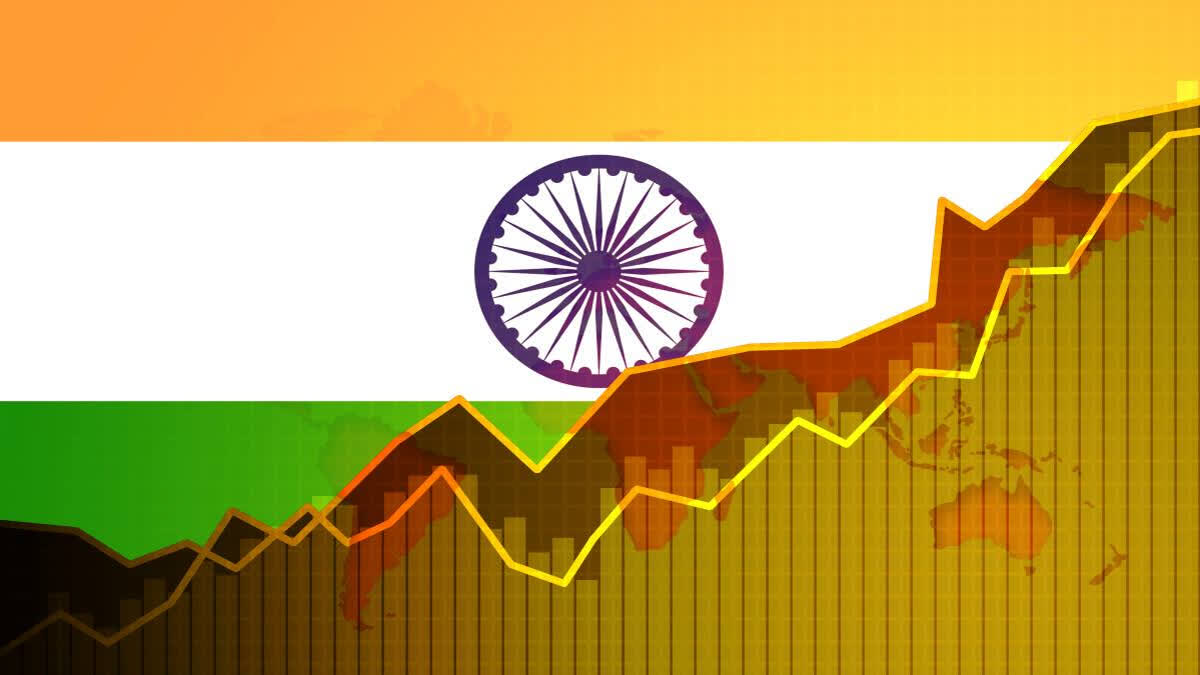Hyderabad: As we look forward to political continuity, the latest growth numbers paint a confusing picture of growth with a strong Gross Domestic Product (GDP) growth of 8.2%, compared to a lower Gross Value Added (GVA) growth figure of 7.2% for FY 2023-24. The GDP-GVA mismatch has led certain economists to question the growth figures, even while the former Chief Economic Advisor, K.V. Subramanian has dismissed such criticisms as coming from those living in their “ideologically driven rabbit holes”. What does the GDP-GVA mismatch mean really, and should we care?
To understand this, it's important to know that the overall output of an economy can be measured using three methods — the output or the value added approach, the income approach and the expenditure approach. All three methods ideally ought to yield the same results since what is produced in the economy is what will be earned by the factors of production and what will be spent. In India, the GVA, calculated using the output approach, reflects the value additions taking place within the domestic economy, and can be seen as a true indicator of productivity in the economy. The GDP, on the other hand, which reflects the total expenditure in the economy, is related to the GVA, since it is the sum total of GVA and the net tax , i.e. taxes minus subsidies.
What has been happening to India’s real production and productivity as measured by GVA? Here we see a difference between yearly and quarterly data. A sector-wise breakdown of the annual real GVA in India over the period 2023-24 compared to the period 2022-23 reveals both disturbing and heartening trends. For instance, due to a below-normal monsoon, agricultural growth, which has been crucial in sustaining the Indian economy even during the pandemic, has dramatically fallen from 4.7% to 1.4% over the period. A similar dramatic fall has been witnessed in the growth rates of the service sector — trade, hotels, transport, communications and services related to broadcasting, which boosted Indian growth rates in the post-pandemic era. It looks like the era of revenge tourism is waning, so that this sector’s growth has almost halved in the past year — from 12% to 6.4%. On the positive side, manufacturing growth has surged from -2.2% in FY 23 to a robust 9.9% growth rate figure in FY 24.
The growth in manufacturing is corroborated by data from the Index of Industrial production (IIP), which shows a 5.5% growth in the sector, driven by the manufacture of basic metals, motor vehicles, trailers and semi-trailers, and other transport equipment. On the other hand, the manufacture of products like tobacco, wearing apparel and computer, electronic and optical products have experienced double digit negative growth rates.
A review of the quarterly level GVA data reveals that nearly every sector slowed down in Q4 compared to Q3, raising questions regarding the significant fluctuations in growth rates among quarters. For instance, the manufacturing sector recorded growth rates of 2.1%, 11.9%, 10.6%, and 7.7% in Q1, Q2, Q3, and Q4 of FY 2023-24, respectively.
Turning to GDP, the share of consumption in overall expenditure has fallen to 52.9%, while driven by government capital expenditure, the share of gross fixed capital formation (GFCF) has risen to 33.2% in Q4 2023-24. The growth rate of Private Final Consumption Expenditure remained at 4% in Q4 2023-24, the same as in Q3, while that of GFCF decreased from 9.7% in Q3 FY24 to 6.3% in Q4 FY24.
Headline growth, measured by GDP, points to robust growth of 8.2%, suggesting strong economic performance. However, the GDP-GVA controversy acts as a dampener. The gap between GDP and GVA can be explained by changes in net taxes, as GDP on the production side equals GVA plus net taxes on products. One reason for the increase in GDP is the growth in net taxes, attributed to a reduction in the Centre’s expenditure on subsidies. Driven by a reduction in food and fertilizer subsidies, the latter fell by 23.8% year-on-year in FY 24.
On the expenditure side, the value of GDP is accentuated by the item “discrepancies,” — an item which reconciles the statistics ministry’s GDP estimates using the income and expenditure approaches. A large positive number, as seen in the FY 2023-24 data, indicates a significant increase due to methodological issues.
Thus, in sum, the controversy over the GDP-GVA difference may point to methodological and mathematical issues, rather than significant problems with the data. A case of making a mountain out of a molehill? Well, not really, since the underlying concerns regarding the foundations of robust growth remain!
(Tulsi Jayakumar is Professor, Finance and Economics and Executive Director, Centre for Family Business & Entrepreneurship at Bhavan’s SPJIMR. Views are personal.)



